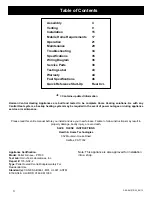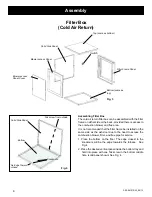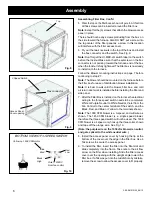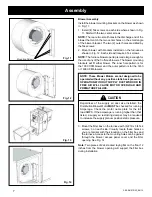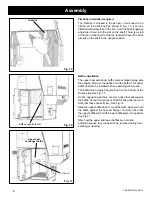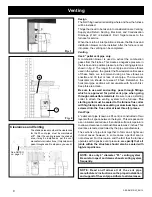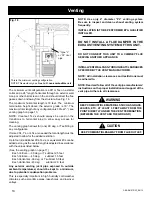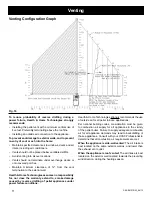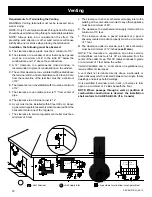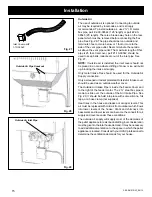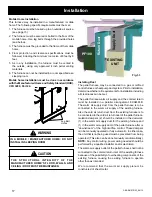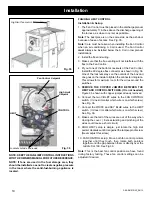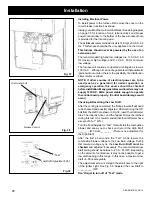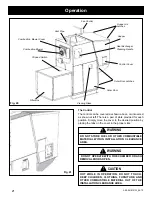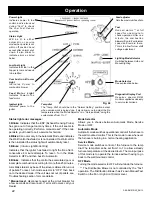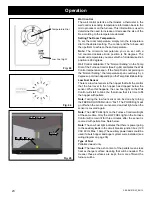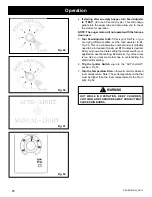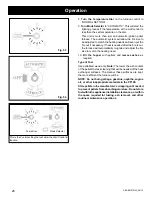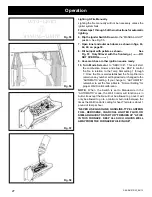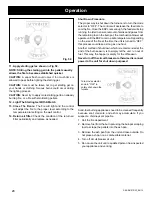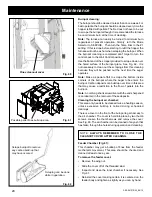
14
3-90-08101R23_06/13
16”
18
1/8
”
18
1/8
”
Fig. 25
Chimneys taller than 20’ above the connection will require a
draft test to determine if the draft is too high.
Note: The High Burn Draft should not exceed .85 IWC. Some
form of a restrictor plate may be required at the top of high
chimneys to reduce the draft. See page 20 for the Draft Test
procedure.
Fig. 23
See NOTES:
on page 12
Fig. 26
Fig. 24
The shaded area is where the clearance for the PL vent
pipe must be maintained at
3”
. After the venting leaves the
shaded area it may be installed as per the vent manufacturer
instructions. (Only listed 4” pellet vent wall pass-throughs and
fire stops may be used.) See Fig. 23 & 25.
Creosote - Formation and Need for removal -
When wood is burned slowly, it produces tar and other organic vapors,
which combine with expelled moisture to form creosote. The creosote vapors condense in the relatively cool chimney flue
of a slow-burning fire. As a result, creosote residue accumulates on the flue lining. When ignited, this creosote makes an
extremely hot fire. The pellet vent pipe should be inspected at least twice monthly during the heating season to determine
if a creosote buildup has occurred. If creosote has accumulated it should be removed to reduce the risk of a chimney fire.
Guidance on minimizing creosote formation and the need for periodic creosote removal: The chimney should be inspected
during the heating season to determine if a creosote build-up has occurred. If a significant layer of creosote has accumulated
(3mm or more) it should be removed to reduce the risk of a chimney fire.
This furnace may be used and installed into an existing
masonry or Class A metal chimney.
Certain Canadian and local Codes may require that the
chimney be fully relined. See Fig. 24.
This Furnace may Not
be vented into a chimney flue serving
another appliance.
The chimney should be cleaned and or inspected before
installation.
venting and Installation
16”
Summary of Contents for PF100
Page 48: ...48 3 90 08101R23_06 13 ...



